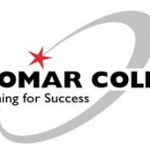- Industria: Education
- Number of terms: 12355
- Number of blossaries: 0
- Company Profile:
Founded in 1946, Palomar College is a public two-year community college in the city of San Marcos, located in north San Diego County, California. Palomar offers over 300 associate degree, certificate programs and is designated by the U.S. Department of Education as an Hispanic-Serving Institution ...
Un gameto, ya sea un espermatozoide o un óvulo. Las células sexuales se producen por el proceso de la meiosis y tienen un número haploide de cromosomas. Vea Célula somática.
Industry:Anthropology
A gene that can be inherited by both genders but is usually expressed differently in males and females. See sex-limited gene.
Industry:Anthropology
Una condición genética hereditaria en la cual los intestinos y otros órganos abdominales sobresalen a través de la pared abdominal central. Esto debe ser corregido mediante cirugía al nacer.
Industry:Anthropology
Una estructura relativamente grande que se encuentra en todas las células eucariotas. Contiene los cromosomas (ADN nuclear) y está rodeado por una membrana nuclear.
Industry:Anthropology
Un grupo no cautivo de primates y otros animales que viven en su hábitat natural, en gran parte libre de las restricciones impuestas por los seres humanos.
Industry:Anthropology
Una clase de moléculas orgánicas que incluyen grasas, aceites y ceras.
Industry:Anthropology
A radiometric dating method based on the fact that trace amounts of radioactive atoms, such as uranium and thorium, in some kinds of rock, soil, and clay produce constant low amounts of background ionizing radiation. The atoms of crystalline solids, such as pottery and rock, can be altered by this radiation. Specifically, the electrons of quartz, feldspar, diamond, or calcite crystals can become displaced from their normal positions in atoms and trapped in imperfections in the crystal lattice of the rock or clay molecules. These energy charged electrons progressively accumulate over time. When a sample is heated to high temperatures in a laboratory, the trapped electrons are released and return to their normal positions in their atoms. This causes them to give off their stored energy in the form of light impulses (photons). This light is referred to as thermoluminescence (literally "heat light"). A similar effect can be brought about by stimulating the sample with infrared light. The intensity of thermoluminescence is directly related to the amount of accumulated changes produced by background radiation, which, in turn, varies with the age of the sample and the amount of trace radioactive elements it contains.
Industry:Anthropology
Un gen que puede ser heredado por ambos sexos, pero se expresa generalmente en sólo machos o hembras. Ver gen controlado por sexo.
Industry:Anthropology
Una muestra que es seleccionada por un investigador sin ningún sesgo. En otras palabras, todas las muestras en una población tienen la misma probabilidad de ser seleccionado. Esto se puede lograr mediante el uso de un ordenador para seleccionar la muestra al azar.
Industry:Anthropology
A horseshoe-shaped bone in the neck above the larynx supporting the base of the tongue. Since jaw, tongue, and larnyx muscles are anchored to it, the hyoid bone is essential for the production of sounds used in human speech. Humans are the only primates that have their hyoid bones high in the neck. Subsequently, they can produce a wider range of vocal sounds than other primates.
Industry:Anthropology
